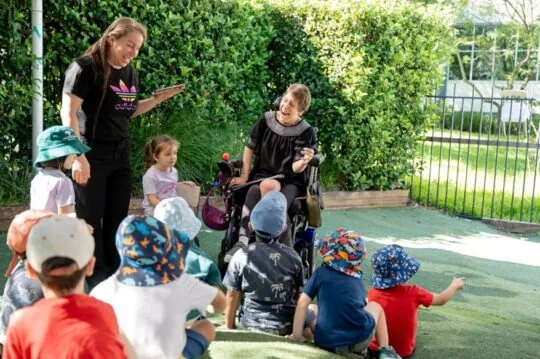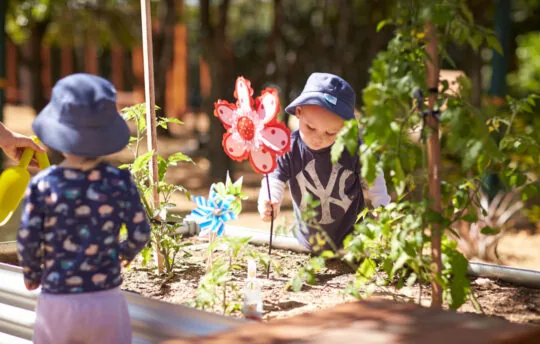Understanding Toddler Tantrums and How to Respond | OAC


Understanding Toddler Tantrums: Why they happen & how to respond
Toddler behaviour can delight, amuse, frustrate and confuse you. With talk of the ‘terrible twos’ toddlers can get a bad rap! There is no doubt about it – toddlers are experts at ruffling our feathers, but it is important to remember that their actions are not acts of defiance directed toward you.
Why do toddler tantrums happen?
Two year olds are developing independence and learning how to express frustration. It is normal for toddlers to begin to struggle between their reliance on adults and their desire for independence. One minute your child might be clinging to you, and the next he or she is running in the opposite direction. Two-year-olds undergo major motor, intellectual, social and emotional changes. Their vocabularies are growing, they’re eager to do things on their own, and they’re beginning to discover that they’re expected to follow certain rules. However, most 2-year-olds still aren’t able to move as swiftly as they’d like, clearly communicate their needs or control their feelings. This can lead to frustration, misbehaviour and tantrums.
By accepting the changes your child is going through and taking the time to understand your child’s behaviour you can tune into their feelings and help them find positive ways to tell you what they need.
Top tips for toddler tantrums
The best way to respond to a toddler tantrum is to try the following:
1. Breathe
“When little people are overwhelmed by big emotions, it’s our job to share our calm, not to join their chaos.” – L.R. Knost.
Breathe, calm yourself down, and remember that ultimately you are your child’s strongest role model. The less emotion YOU show, and the calmer you are, the more quickly temper tantrums will dissolve. How you react now is what they will copy.
2. Help your child to name their feelings
“I see you are really mad.” Naming not only teaches emotions, it also helps your toddler to feel seen and heard. Honour your child’s feelings while holding the limit. “I can see you are really mad, but I won’t let you hit.” Your child’s feelings are not right or wrong. It is how feelings get expressed that can be problematic, such as hitting when angry. Give her some space while continuing to supervise: “You are so upset your whole mind and body are out of control. I will be here by your side and wait for you to calm.”
3. Stay close, listen and support.
Toddlers can be hard to console in a tantrum. Make sure they’re in a safe place and stay close by. Let them know that you’re there, ready and waiting if they want you to help them calm down or give them a hug. Until then, give them space.
4. Re-Connect.
When the tantrum dies, it’s time to re-connect. Only at this point should you talk about how your toddler felt, how you feel and how they made others feel. Any earlier and they won’t—can’t—listen. You can ask if he wants a hug or offer a soothing activity like sand or water play. You could share a favorite song or book, or go for a walk together.
Although tantrums can be unpleasant they are also opportunities for your child to learn about feelings, self-regulation and social rules and limits – all critical life skills.
There is such a wealth of information on the internet on toddler behaviour that it can be difficult to negotiate and identify strategies to support your child to positively interact with others and to communicate their wants and needs. Here are some articles, websites and podcasts that provide valuable tips for negotiating this exciting stage with confidence:
Toddler Behaviour – Raising Children
Stop Negotiating with your Toddler (and what to do instead) – Janet Lansbury
Why is my Child behaving this Way? – Janet Lansbury
Helping Toddlers Succeed? – Janet Lansbury
9 Ways of Staying Mostly Unruffled with Toddlers – Janet Lansbury
The Secret of Turning a Toddler’s No into a Yes – Lisa Sunbury Gerber
Seven Weird Toddler Behaviours – The Bump
Podcasts
A Toddler’s ‘do it myself’ attitude
FAQs:
Is it best to ignore toddler tantrums?
The less emotion you show, and the calmer you are, the more quickly temper tantrums will dissolve. It’s important to help your child name their feelings, that you stay close, listen and support your child and re-connect with them once the tantrum dies. Never give in or bribe them to stop because then they will most likely do it again to get what they want.
At what age do toddler tantrums start and stop?
Temper tantrums are common in young children between the ages of 1 and 3 years. Parents often refer to them as the “terrible 2’s”. However, the tantrum stage can stretch to age 4.
What happens if my toddler has a tantrum in public?
Try to stay calm as much as possible. Follow the steps above as if the tantrum was happening at home.
What should you not say during a tantrum?
Try not to get angry, raise your voice or make any threats as it is likely to only make your toddler more upset.
Only About Children can help your child to grow, make friends and explore the world.
Only About Children can help your child to grow, make friends and explore the world.
Related Reads


Bec Celebrates 10 Years Working In Her Dream Job At OAC Concord
Rebecca Donatiello (Bec) celebrates 10 years working and learning at Only About Children Concord.

Choosing The Right Preschool/Kindergarten For Your Child
Choosing the right Preschool/Kindergarten for you child can be a daunting task. When exploring the ideal preschool choices for your child, there is no need to navigate blindly. Simply by asking the right questions, you can find the perfect match.

